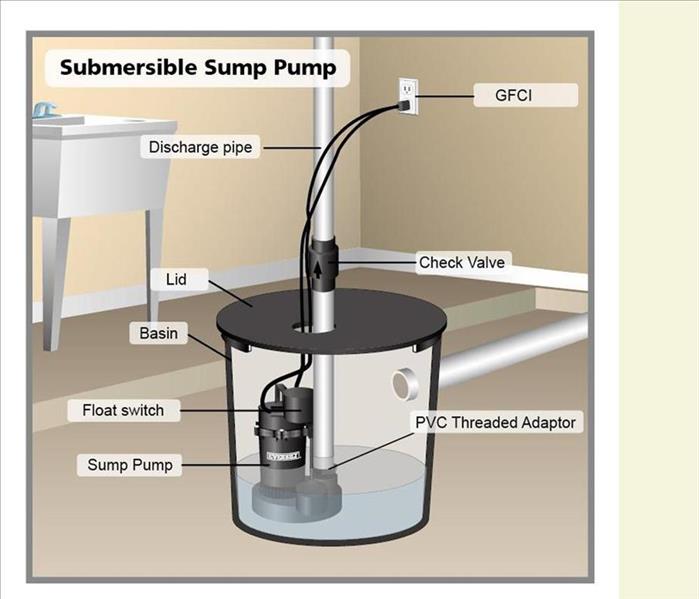Sump Pump Maintenance Checklist for Ozaukee County Homeowners
7/28/2022 (Permalink)
When was the last time you maintained your sump pump? Here are some tips to show your sump pump some love and keep your basement dry.
- Make sure your sump pump is totally upright. Your sump pump should be sitting on solid, even ground. Any sort of leaning can shift the water in the pump’s pit and put unnecessary pressure on its components.
- Open it up. Take the cover off the sump pump pit or basin and have a look inside. Clear any debris, mud or rocks that you find, as any foreign items can clog your sump pump and cause an overflow.
- Double-check the drain hose. Check to make sure the drain hose is connected, and that it’s not blocked or frozen. A clogged drain hose can cause your sump pump to run continuously, as it won’t be able to dispose of the water that’s filled its pit.
- Clear out the inlet screen. Make sure the inlet screen is allowing water to enter your sump pump’s pit. If your inlet screen is blocked, water won’t be able to make its way into the sump pump’s pit and could lead to a basement flood.
- Keep it afloat. Your sump pump’s float controls when it will turn on and pump excess water out. Make sure the float component can move freely and isn’t blocked. A malfunctioning float can cause your pump to not run when it’s supposed to, or run constantly, eventually burning out your pump’s engine.
- Make sure it’s flowing away from your house. The next time you hear your sump pump running, go outside and make sure its discharge pipe is pumping the water away from your home at a safe distance. If it’s too close, the water could seep back into your pump, causing your pump to run continuously and inefficiently. The more your sump pump runs, the more likely it is to burn out early in its life span. While you don’t want your discharge pipe too close to your house, shed, garage or other structure, make sure it does stay on your property. You’ll have some unhappy neighbors if your sump pump is pushing your excess water onto their lot.
- Give your sump pump a test run. Fill the pit with a bucket of water to turn your pump on. Watch it carefully to see if it’s getting rid of the water, then check the discharge pipe outside to make sure it’s disposed of properly. If the pump doesn’t run, make sure it’s plugged in and its power cord is in working order.
- Plan for the unexpected. Having a backup battery or generator can be crucial if a strong rain storm comes complete with a power outage. And eventually, your sump pump may give out without the help of a power outage. To avoid the stress of trying to buy and install a new sump pump while the water seeps closer and closer to your basement, have a backup sump pump handy — and be sure to test it regularly, too.
- Call a professional. You’ve checked the power cords, discharge pipe, inlet screen and every other piece of the pump, but still can’t figure out what’s wrong. It’s time to call a professional! Risking your basement and everything else in it isn’t worth maintaining your pride as a handyman or woman — get it fixed and fast!
If worse comes to worst, and you do have a backup and need assistance with damage from water or sewage, call SERVPRO of Ozaukee County for 24/7 help at (262) 242-8888.



 24/7 Emergency Service
24/7 Emergency Service
